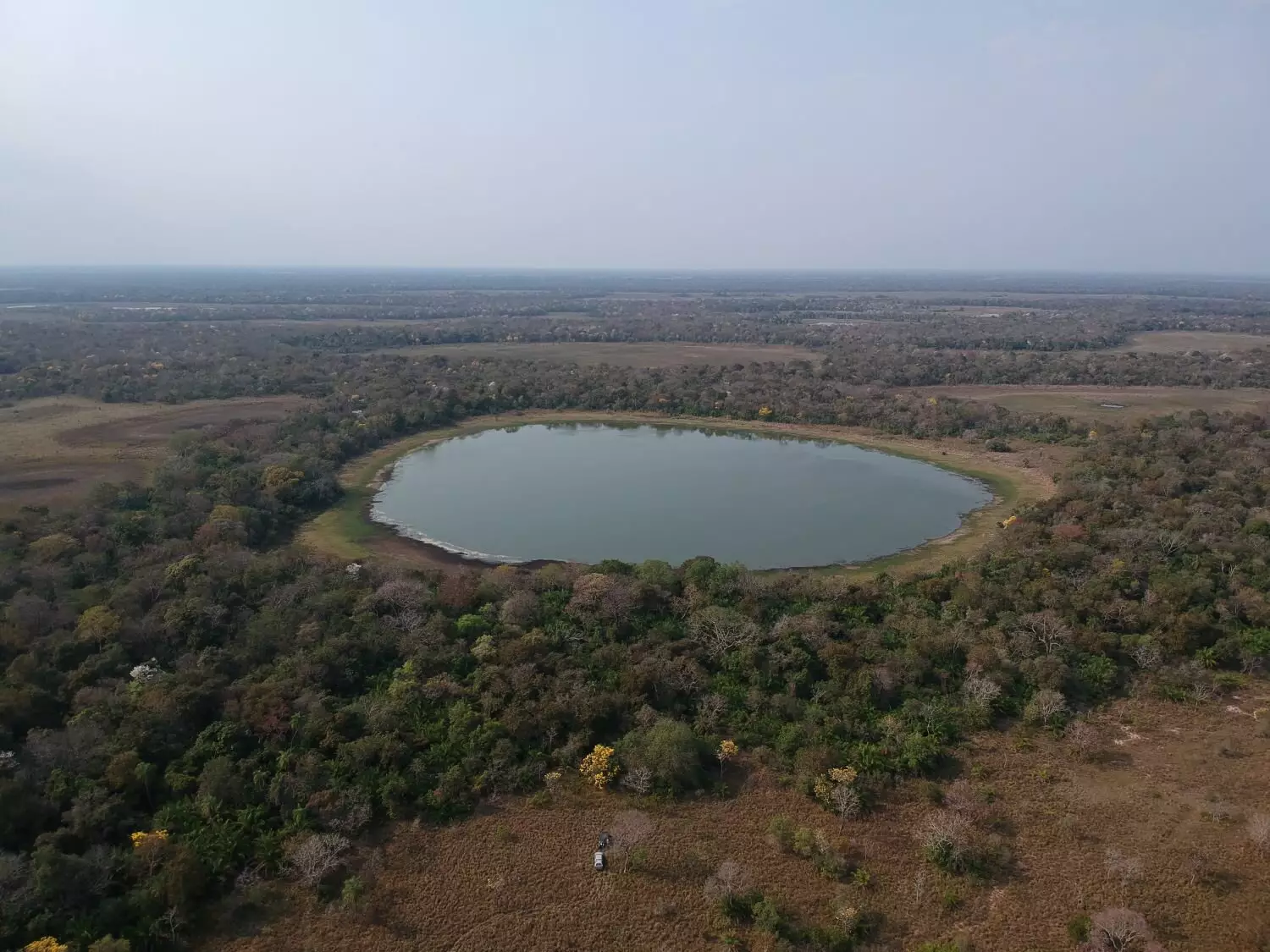The Pantanal is renowned as the world’s largest tropical wetland, sprawling across an impressive 153,000 km², predominantly situated in southwestern Brazil while also extending into Bolivia and Paraguay. This diverse ecosystem is characterized by its seasonal variations, alternating between periods of dry and rainy weather, which significantly influence its ecological balance. Recent studies underscore that soda lakes within this region, numbering around 900, are increasingly becoming focal points in discussions about greenhouse gas emissions. These lakes exhibit unique chemical properties; they are shallow, highly alkaline, and have a pH that can soar to 11. The interplay between these environmental factors and microbial life forms a critical area of study for understanding emissions of greenhouse gases, including methane and nitrous oxide.
A recent investigative study led by scientists from the University of São Paulo and the Federal University of São Carlos sheds new light on how the microbiological communities in soda lakes affect greenhouse gas emissions. Researchers have noted the stark differences in gas emissions based on the chemical characteristics of these lakes and the composition of their biological communities. For instance, they categorized the lakes into three main types: eutrophic turbid (ET), oligotrophic turbid (OT), and clear vegetated oligotrophic (CVO). The findings revealed that ET lakes are particularly prolific emitters of methane. This phenomenon can be attributed to events such as cyanobacterial blooms and the decomposition of organic matter, which are catalyzed by changes in environmental conditions.
Cyanobacteria, known for their ability to photosynthesize, play a significant role in these lakes. As they bloom, they produce organic material that not only supports diverse microbial life but also contributes to methane production when they break down. Research has shown that during drought conditions, this process accelerates, leading to increased methane emissions. Conversely, OT lakes did not emit methane, likely due to high sulfate concentrations, but they nonetheless contributed to CO2 and N2O emissions.
The Pantanal is currently facing unprecedented environmental challenges. Consecutive years of extreme drought intertwined with rampant wildfires have devastated many parts of the region. Notably, the incidence of wildfires surged dramatically in 2020, marking an alarming upward trend that has continued into subsequent years. Satellite imagery has revealed a marked reduction in the area of the lakes from 2000 to 2022, correlating this shrinkage with rising temperatures, altered rainfall patterns, and the proliferation of harmful cyanobacteria. Thierry Alexandre Pellegrinetti, a researcher involved in the study, has emphasized the critical nature of these changes, indicating that the biological landscape of these lakes is shifting irreparably due to climate change.
The study’s methodology incorporated metagenomic data, which provides a comprehensive understanding of microbial communities and their roles in biogeochemical processes within these soda lakes. These findings are vital not only for gauging current emissions but also for projecting future shifts in greenhouse gas outputs as the climate continues to evolve.
The research highlights the paramount importance of microbial diversity in soda lakes. Microorganisms act as the backbone of ecological processes, facilitating nutrient cycling and maintaining the health of these ecosystems. As elucidated by microbiologist Simone Raposo Cotta, understanding how these microorganisms function is critical in predicting how lake ecosystems will respond to environmental stressors.
The adaptability of various bacterial communities, particularly those involved in cyanobacterial growth, is crucial. During periods of drought, cyanobacteria can utilize ambient CO2 to survive, while during the rainy season, they enhance their numbers, leading to complex interactions within the ecological framework. This duality reflects a vital mechanism that influences lake health and greenhouse gas emissions, reiterating the necessity of considering microbial composition in emission models.
While significant strides have been made in understanding the dynamics of soda lakes and their contributions to greenhouse gas emissions, much work remains. The exact impact of these emissions on the overall carbon balance of the Pantanal ecosystem is still unclear. Future research endeavors must delve deeper into geochemical processes and strive to develop accurate models to estimate these emissions comprehensively.
As climate change continues to exert pressure on ecosystems globally, the findings from the Pantanal’s soda lakes bear significant implications. Addressing these changes not only requires a deeper understanding of lake dynamics but also proactive measures to mitigate emissions. The inherent biodiversity within these ecosystems forms an intricate web of interactions that necessitates further exploration to forge sustainable environmental strategies as the world faces mounting climate challenges.

